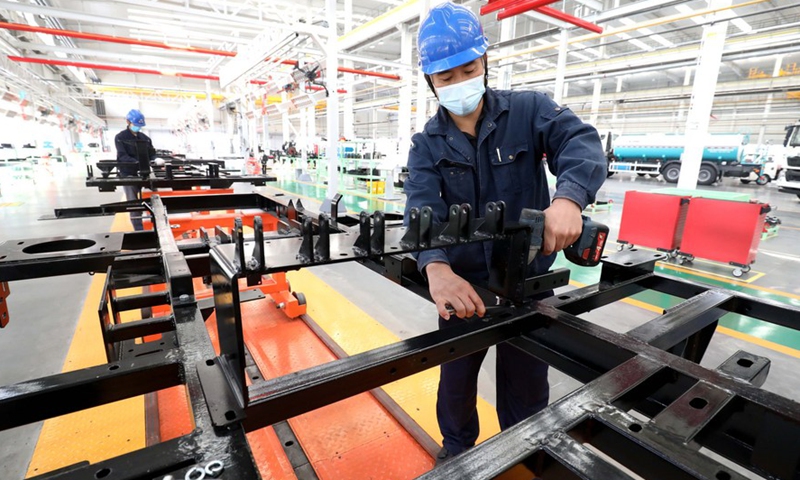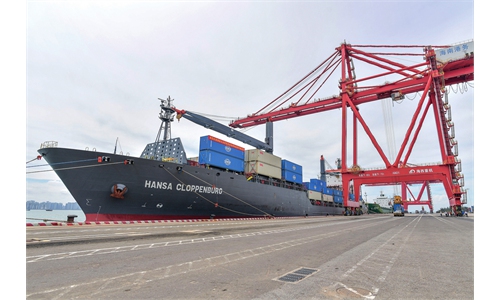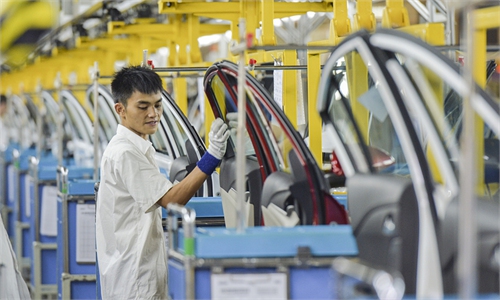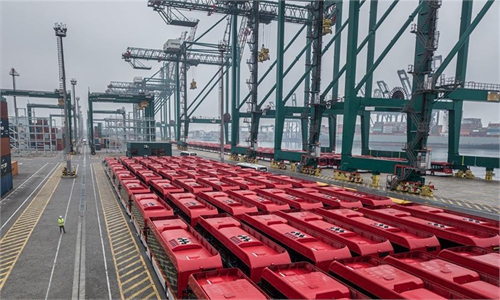SOURCE / INDUSTRIES
China's Caixin manufacturing PMI stands at 53.6 in October, highest since February 2011

Workers are busy at the factory of a manufacturing company in Shijiazhuang, north China's Hebei Province, Oct. 19, 2020. (Photo by Liang Zidong/Xinhua)
China's Caixin manufacturing purchasing managers index (PMI) came in at 53.6 in October, higher than the expected 53 and up 0.6 percentage points from September - the highest since February 2011 - according to data released on Monday. Manufacturing output has now been in expansion territory for 8 consecutive months.
Analysts said that China's economy is expected to continue to recover in the fourth quarter.
"China's manufacturing industry is in an upward trend, as well as China's economic recovery. In the fourth quarter, major enterprises are striving for a better performance, and the overall market performance should be better than expected," Jiang Han, a senior researcher at the Pangoal Institution, told the Global Times on Monday.
With the impact of the pandemic gradually receding and the supply and demand of the manufacturing sector flourishing, the index of new orders in October continued to rise sharply within the expansion range, reaching its highest level since December 2010.
"External demand gradually recovered, and the new export orders index and import index rose. China's exports and imports in the fourth quarter are expected to maintain growth," Tang Jianwei, chief macro analyst at the Financial Research Center of the Bank of Communications, told the Global Times.
Since the third quarter, the global economy and industrial production have gradually recovered, with the global manufacturing PMI rising to 52.3, the highest level since October 2018, leading to gradually recovering external demand.
In order to meet the growth in production demand, manufacturers will increase procurement accordingly. Manufacturing purchases of raw materials continued to expand in October, posting its second highest reading in more than seven years, and inventories also hit their record high in more than a decade, per Caixin data.
Due to strong demand, finished goods inventory declined slightly during the month, and suppliers' supply hours also extended slightly.
The business confidence index has soared to its highest level since September 2014. Nearly one third of entrepreneurs believe their business conditions will improve further in the coming year. Respondents are confident about the effectiveness of epidemic prevention and control and the continued economic recovery, per Caixin.
The PMI released on Saturday by the National Bureau of Statistics (NBS) stood at 51.4 in October, edging down 0.1 percentage point from a month earlier, but remaining in the expansion territory for eight months in a row.
The slight decline in the PMI is a normal seasonal fluctuation, as the production index and the inventory index fell slightly due to the production slowdown during the 8-day National Day holidays at the beginning of October, said Tang.
The official data usually targets a range of large companies, most of them state-owned, while the private Caixin survey focuses on small and medium-sized enterprises.
In the last two years, the Caixin index has been more optimistic and the NBS index stable. The production situation in the manufacturing industry is uneven. In some regions, many factories have not yet restarted or have suspended production, while in others, both supply and demand are flourishing, and factories are working overtime. Nevertheless, new orders in some sectors will continue to rise as the impact of the epidemic fades, Zhang Xiaorong, director of the Beijing-based Cutting-Edge Technology Research Institute, told the Global Times on Monday.
The epidemic situation in China has stabilized, and economic recovery will continue. Meanwhile, there are still many uncertainties in the external environment, such as the repeated outbreak of COVID-19 overseas on exports, said Zhang.



